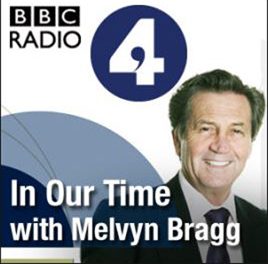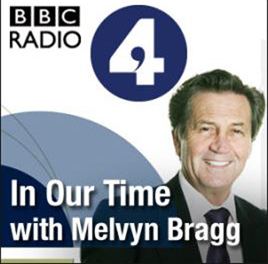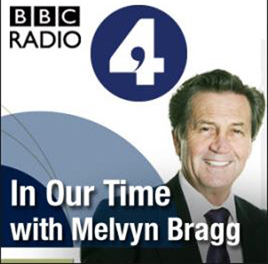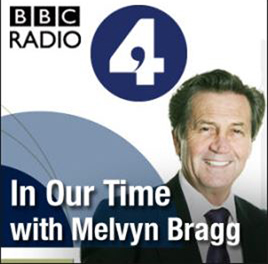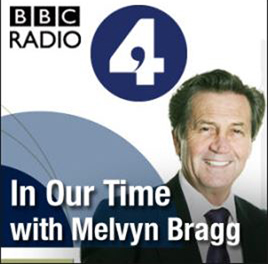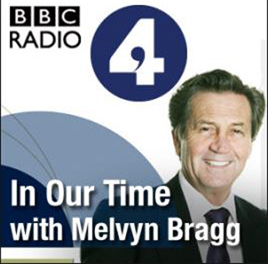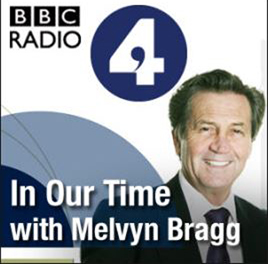Select one or more of these popular tags:
-
Humans in Space 1
-
Frank Close
As we prepare to return astronauts to the Moon and then ultimately to the next frontier, Mars, Frank Close explores the physical and psychological limitations to human space travel.
As we prepare to return astronauts to the Moon and then ultimately to the next frontier, Mars, Frank Close explores the physical and psychological limitations to human space travel.
-
Humans in Space 2
-
Frank Close
Frank Close considers if it's better to send robots to do the dirty work in future space missions to the Moon and beyond; or are astronauts still needed?
Frank Close considers if it's better to send robots to do the dirty work in future space missions to the Moon and beyond; or are astronauts still needed?
-
In Business - DC Rider
-
Peter Day
What does it take to get an electric car off the ground? Lots of effort and endless patience, explains California-based inventor Lon Bell. He talks to Peter Day about his vision of transforming city life with the introduction of a new breed of electric vehicle. The all-electric, battery-powered electric car that Lon Bell designed is called the G-Wiz, and is now available in the UK.
What does it take to get an electric car off the ground? Lots of effort and endless patience, explains California-based inventor Lon Bell. He talks to Peter Day about his vision of transforming city life with the introduction of a new breed of electric vehicle. The all-electric, battery-powered electric car that Lon Bell designed is called the G-Wiz, and is now available in the UK.
-
In Business - Do It Like Deming
-
Peter Day
The cult of quality is now taken for granted in business. It was inspired by a single American guru, the late W Edwards Deming, whose ideas shocked the world when they were first picked up in Japan in the 1950s. But there's more to Deming than merely the pursuit of quality. And many of his other ideas still have the power to transform the way people work... and the way companies operate. That's what his disciples say, anyway.
The cult of quality is now taken for granted in business. It was inspired by a single American guru, the late W Edwards Deming, whose ideas shocked the world when they were first picked up in Japan in the 1950s. But there's more to Deming than merely the pursuit of quality. And many of his other ideas still have the power to transform the way people work... and the way companies operate. That's what his disciples say, anyway.
-
In Our Time - Thoreau and the American Idyll
-
Melvyn Bragg
Melvyn Bragg discusses the life and ideas of the 19th century American writer and philosopher, Henry David Thoreau. His guests this week are Kathleen Burk, Professor of Modern and Contemporary History at University College London; Tim Morris, Lecturer in American Literature at the University of Dundee; and Stephen Fender, Honorary Professor in English at University College London.
Melvyn Bragg discusses the life and ideas of the 19th century American writer and philosopher, Henry David Thoreau. His guests this week are Kathleen Burk, Professor of Modern and Contemporary History at University College London; Tim Morris, Lecturer in American Literature at the University of Dundee; and Stephen Fender, Honorary Professor in English at University College London.
Melvyn Bragg and guests Roy Foster, Jeri Johnson and Katherine Mullin discuss A Portrait of the Artist as a Young Man, James Joyce's groundbreaking 1916 novel about growing up in Catholic Ireland.
Melvyn Bragg and guests Roy Foster, Jeri Johnson and Katherine Mullin discuss A Portrait of the Artist as a Young Man, James Joyce's groundbreaking 1916 novel about growing up in Catholic Ireland.
-
In Our Time - Animal Rights
-
Melvyn Bragg
Melvyn Bragg and guests discuss the role of animals in humankind's search for knowledge.
Melvyn Bragg and guests discuss the role of animals in humankind's search for knowledge.
-
In Our Time - Architecture and power
-
Melvyn Bragg
The role which architecture has played in our public life throughout history, whether in homage to an individual or as a monument to an institution or ideology, has always been a potent symbol of wealth, status and power. From castles to cathedrals, from the pyramids to Canary Wharf, architecture has always served to glorify in some way the animating ideal of the time. Why is architecture such a powerful form of expression? Have architects concerned themselves mainly with the masses, or restricted their designs to the demands and aspirations of the elite? What can a country’s buildings tell us about its ideas of its own past and present identity?
The role which architecture has played in our public life throughout history, whether in homage to an individual or as a monument to an institution or ideology, has always been a potent symbol of wealth, status and power. From castles to cathedrals, from the pyramids to Canary Wharf, architecture has always served to glorify in some way the animating ideal of the time. Why is architecture such a powerful form of expression? Have architects concerned themselves mainly with the masses, or restricted their designs to the demands and aspirations of the elite? What can a country’s buildings tell us about its ideas of its own past and present identity?
-
In Our Time - Artificial Intelligence
-
Melvyn Bragg
Melvyn Bragg and guests discuss artificial intelligence. Can we create a machine that creates?
Melvyn Bragg and guests discuss artificial intelligence. Can we create a machine that creates?
-
In Our Time - Atrocity in the 20th Century
-
Melvyn Bragg
Melvyn Bragg and guests discuss the widespread and chilling atrocities of the 20th century.
Melvyn Bragg and guests discuss the widespread and chilling atrocities of the 20th century.
-
In Our Time - Babylon
-
Melvyn Bragg
Six thousand years ago, between the Tigris and the Euphrates, the first cities were being built. The great empire to spring from the region was Babylon, which held sway for over a thousand years and in that time managed to garner an extraordinarily bad press: it’s associated with the Tower of Babel, with Nineveh where Jonah is sent to preach repentance and, perhaps most famously, with “Mystery, Babylon the Great, the Mother of Harlots and Abominations of the Earth” - the whore of Babylon, who in Revelation is taken to personify the city itself. It’s not just the Bible; Herodotus described the Babylonians as effeminate, lascivious and decadent as well.
Six thousand years ago, between the Tigris and the Euphrates, the first cities were being built. The great empire to spring from the region was Babylon, which held sway for over a thousand years and in that time managed to garner an extraordinarily bad press: it’s associated with the Tower of Babel, with Nineveh where Jonah is sent to preach repentance and, perhaps most famously, with “Mystery, Babylon the Great, the Mother of Harlots and Abominations of the Earth” - the whore of Babylon, who in Revelation is taken to personify the city itself. It’s not just the Bible; Herodotus described the Babylonians as effeminate, lascivious and decadent as well.
-
In Our Time - Bismarck: The Iron Chancellor
-
Richard J Evans, Christopher Clark & Katharine Lerman
Otto von Bismarck was one of Europe's leading statesmen in the 19th Century and credited with the unification of Germany. He had a voracious ambition for his home state Prussia and made it supreme among other states in the German Confederation. After vanquishing Austria and France, he led the new industrialising Germany, managing to remain in power for a further two decades. He founded one of Europe's first welfare states
Otto von Bismarck was one of Europe's leading statesmen in the 19th Century and credited with the unification of Germany. He had a voracious ambition for his home state Prussia and made it supreme among other states in the German Confederation. After vanquishing Austria and France, he led the new industrialising Germany, managing to remain in power for a further two decades. He founded one of Europe's first welfare states
-
In Our Time - Black Holes
-
Melvyn Bragg
Melvyn Bragg and guests discuss Black Holes. They are the dead collapsed ghosts of massive stars and they have an irresistible pull: their dark swirling, whirling, ever-hungry mass has fascinated thinkers as diverse as Edgar Allen Poe, Stephen Hawking and countless science fiction writers.
Melvyn Bragg and guests discuss Black Holes. They are the dead collapsed ghosts of massive stars and they have an irresistible pull: their dark swirling, whirling, ever-hungry mass has fascinated thinkers as diverse as Edgar Allen Poe, Stephen Hawking and countless science fiction writers.
-
In Our Time - Catherine the Great
-
Melvyn Bragg
In Moscow's Tretyakov Gallery hangs perhaps the most well-known picture of Russia's most well-known ruler. Dimitri Levitsky's 1780 'Portrait of Catherine the Great in the Justice Temple' depicts Catherine in the temple burning poppies at an altar, symbolising her sacrifice of self-interest for Russia. Law books and the scales of justice are at her feet, highlighting her respectful promotion of the rule of law. But menacingly, in the background an eagle crouches, suggesting the means to use brutal power where necessary. This was one of many images that Catherine commissioned that demonstrated her skill at manipulation and reinvention.
In Moscow's Tretyakov Gallery hangs perhaps the most well-known picture of Russia's most well-known ruler. Dimitri Levitsky's 1780 'Portrait of Catherine the Great in the Justice Temple' depicts Catherine in the temple burning poppies at an altar, symbolising her sacrifice of self-interest for Russia. Law books and the scales of justice are at her feet, highlighting her respectful promotion of the rule of law. But menacingly, in the background an eagle crouches, suggesting the means to use brutal power where necessary. This was one of many images that Catherine commissioned that demonstrated her skill at manipulation and reinvention.
-
In Our Time - Childhood
-
Melvyn Bragg
Melvyn Bragg and guests discuss childhood. The 20th Century was proclaimed the Century of the Child. It has been much else but in the western world the position, the possibilities, the meaning and the story of childhood have been changed, for many, monumentally
Melvyn Bragg and guests discuss childhood. The 20th Century was proclaimed the Century of the Child. It has been much else but in the western world the position, the possibilities, the meaning and the story of childhood have been changed, for many, monumentally
-
In Our Time - China: The Warring States Period
-
Melvyn Bragg
400 BC to 200 AD is known as the Axial Age, when great civilisations in Asia and the Mediterranean forged the ideas that dominated the next two thousand years. In China the equivalent to the Golden Age in Greece was the Warring States Period. It was a time of political turmoil, economic change and intellectual ferment that laid the foundations for the first Chinese Empire. Astronomy was systematised, the principles of Yin and Yang were invented, Confucianism grew and Taoism emerged, as a hundred schools of thought are reputed to have vied for the patronage of rival kings. Why was a period of war such a fertile age for culture and thought, what kinds of ideas were developed and how do they still inform the thinking of nearly a fifth of the world’s population?
400 BC to 200 AD is known as the Axial Age, when great civilisations in Asia and the Mediterranean forged the ideas that dominated the next two thousand years. In China the equivalent to the Golden Age in Greece was the Warring States Period. It was a time of political turmoil, economic change and intellectual ferment that laid the foundations for the first Chinese Empire. Astronomy was systematised, the principles of Yin and Yang were invented, Confucianism grew and Taoism emerged, as a hundred schools of thought are reputed to have vied for the patronage of rival kings. Why was a period of war such a fertile age for culture and thought, what kinds of ideas were developed and how do they still inform the thinking of nearly a fifth of the world’s population?
-
In Our Time - Climate Change
-
Melvyn Bragg
With Sir John Houghton, Co-Chair of the Inter-Governmental Panel on Climate Change - the United Nations’ global warming science committee; George Monbiot, environmentalist, journalist and Visiting Professor, Department of Philosophy, Bristol University.
With Sir John Houghton, Co-Chair of the Inter-Governmental Panel on Climate Change - the United Nations’ global warming science committee; George Monbiot, environmentalist, journalist and Visiting Professor, Department of Philosophy, Bristol University.
Melvyn tells the story of Darwin's early life in Shropshire and discusses the significance of the three years he spent at Cambridge, where his interests shifted from religion to natural science. Featuring contributions from Darwin biographer Jim Moore, geneticist at University College London Steve Jones, fellow of Christ's College Cambridge David Norman and assistant librarian at Christ's College Cambridge Colin Higgins.
Melvyn tells the story of Darwin's early life in Shropshire and discusses the significance of the three years he spent at Cambridge, where his interests shifted from religion to natural science. Featuring contributions from Darwin biographer Jim Moore, geneticist at University College London Steve Jones, fellow of Christ's College Cambridge David Norman and assistant librarian at Christ's College Cambridge Colin Higgins.
Darwin's expedition aboard the Beagle in December 1831 and how his work during the voyage influenced and provided evidence for his theories. Features his time spent at UCL.
Darwin's expedition aboard the Beagle in December 1831 and how his work during the voyage influenced and provided evidence for his theories. Features his time spent at UCL.
How Darwin was eventually persuaded to publish On the Origin of Species in November 1859 and the book's impact on fellow scientists and the general public.
How Darwin was eventually persuaded to publish On the Origin of Species in November 1859 and the book's impact on fellow scientists and the general public.
Melvyn visits Darwin's home at Down House in Kent. Despite ill health and the demands of his family, Darwin continued researching and publishing until his death in April 1882.
Melvyn visits Darwin's home at Down House in Kent. Despite ill health and the demands of his family, Darwin continued researching and publishing until his death in April 1882.
-
In Our Time - Economic Rights
-
Melvyn Bragg
Is democracy the truest conduit of capitalism, or do the forces that make us rich run counter to the democratic institutions that safeguard our rights?With Professor Amartya Sen, Master of Trinity College, Cambridge and winner of the 1998 Nobel Prize in Economic Science; Will Hutton, former Editor of The Observer, Director of The Industrial Society and author of The State We’re In.
Is democracy the truest conduit of capitalism, or do the forces that make us rich run counter to the democratic institutions that safeguard our rights?With Professor Amartya Sen, Master of Trinity College, Cambridge and winner of the 1998 Nobel Prize in Economic Science; Will Hutton, former Editor of The Observer, Director of The Industrial Society and author of The State We’re In.
-
In Our Time - Education
-
Melvyn Bragg
Melvyn Bragg and guests discuss the history and the modern purpose of education. With Mary Warnock, philosopher and educationalist; Ted Wragg, Professor of Education, University of Exeter.
Melvyn Bragg and guests discuss the history and the modern purpose of education. With Mary Warnock, philosopher and educationalist; Ted Wragg, Professor of Education, University of Exeter.
-
In Our Time - Evil
-
Melvyn Bragg
Melvyn Bragg and guests discuss the concept of evil. With Jones Erwin, Lecturer in Philosophy at the University of Limerick; Stephen Mulhall, Tutor in Philosophy at New College, Oxford University; Margaret Atkins, Lecturer in Theology at Trinity and All Saints College, University of Leeds.
Melvyn Bragg and guests discuss the concept of evil. With Jones Erwin, Lecturer in Philosophy at the University of Limerick; Stephen Mulhall, Tutor in Philosophy at New College, Oxford University; Margaret Atkins, Lecturer in Theology at Trinity and All Saints College, University of Leeds.
-
In Our Time - Evolutionary Psychology
-
Melvyn Bragg
With Janet Radcliffe Richards, Reader in Bioethics, University College, London; Nicholas Humphrey, Professor of Psychology, New School for Social Research, New York; Professor Steven Rose, Professor of Physic, Open University.
With Janet Radcliffe Richards, Reader in Bioethics, University College, London; Nicholas Humphrey, Professor of Psychology, New School for Social Research, New York; Professor Steven Rose, Professor of Physic, Open University.
-
In Our Time - Field of the Cloth of Gold
-
Melvyn Bragg
In the spring of 1520 six thousand Englishmen and women packed their bags and followed their King across the sea to France. They weren't part of an invasion force but were attendants to King Henry VIII and travelling to take part in the greatest and most conspicuous display of wealth and culture that Europe had ever seen. They were met by Francis I of France and six thousand French noblemen and servants on English soil in Northern France and erected their temporary palaces, elaborate tents, jousting pavilions and golden fountains spewing forth red, white and claret wine in the Val D'Or.
In the spring of 1520 six thousand Englishmen and women packed their bags and followed their King across the sea to France. They weren't part of an invasion force but were attendants to King Henry VIII and travelling to take part in the greatest and most conspicuous display of wealth and culture that Europe had ever seen. They were met by Francis I of France and six thousand French noblemen and servants on English soil in Northern France and erected their temporary palaces, elaborate tents, jousting pavilions and golden fountains spewing forth red, white and claret wine in the Val D'Or.
-
In Our Time - Genetic Engineering
-
Melvyn Bragg
Melvyn Bragg and guests discuss the implications of the developments in genetic engineering. With Grahame Bulfield, geneticist, honorary professor, Edinburgh University and Director of the Roslin Institute, Edinburgh; Bryan Appleyard, features writer for The Sunday Times and author of Brave New Worlds: Genetics and the Human Experience.
Melvyn Bragg and guests discuss the implications of the developments in genetic engineering. With Grahame Bulfield, geneticist, honorary professor, Edinburgh University and Director of the Roslin Institute, Edinburgh; Bryan Appleyard, features writer for The Sunday Times and author of Brave New Worlds: Genetics and the Human Experience.
In 1774 a tobacco farmer from Virginia with nice manners and a quiet lifestyle was moved to put himself forward as the military leader of the most massive rebellion the British Empire had ever suffered. George Washington had been a stout upholder of the status quo, regularly lending money to his ne’r-do-well neighbour simply to keep him in the plantation to which he had become accustomed. He even wrote a book on how to behave properly in polite society.
In 1774 a tobacco farmer from Virginia with nice manners and a quiet lifestyle was moved to put himself forward as the military leader of the most massive rebellion the British Empire had ever suffered. George Washington had been a stout upholder of the status quo, regularly lending money to his ne’r-do-well neighbour simply to keep him in the plantation to which he had become accustomed. He even wrote a book on how to behave properly in polite society.
-
In Our Time - Gödel's Incompleteness Theorems
-
Melvyn Bragg
In 1900, in Paris, the International Congress of Mathematicians gathered in a mood of hope and fear. The edifice of maths was grand and ornate but its foundations, called axioms, were shaking with inconsistency and lurking paradox. And so, at that conference, a young man called David Hilbert set out a plan to rebuild them – to make them consistent, all encompassing and without any hint of a paradox.
In 1900, in Paris, the International Congress of Mathematicians gathered in a mood of hope and fear. The edifice of maths was grand and ornate but its foundations, called axioms, were shaking with inconsistency and lurking paradox. And so, at that conference, a young man called David Hilbert set out a plan to rebuild them – to make them consistent, all encompassing and without any hint of a paradox.






